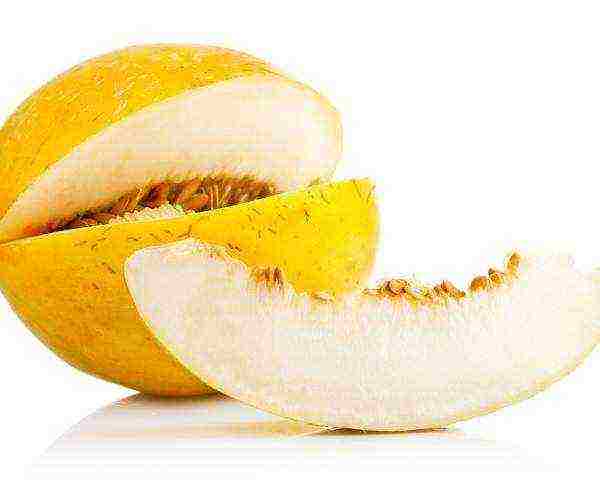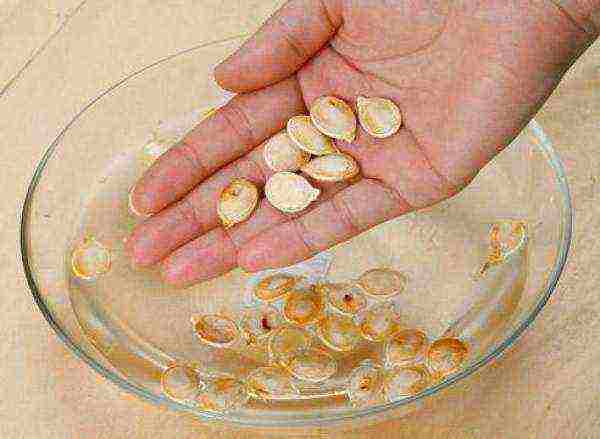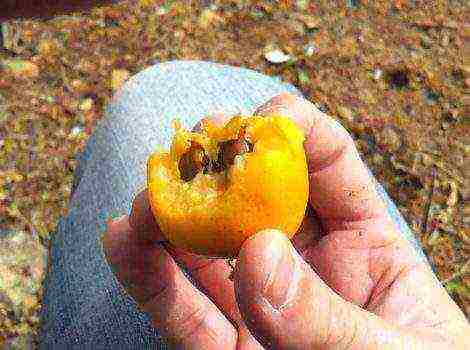Cultivation of a collective farmer's melon in the open field and in a greenhouse
This culture is considered capricious, requires special conditions for growing. Many varieties are cultivated exclusively in the southern regions. But the kolkhoz melon is perfect for breeding in the middle lane, even in the open field.
Description and characteristics of the kolkhoz melon
This variety is popular in areas with risky farming. Indeed, in the Volga region or in the Urals there is no way to grow a normal berry without planting it in a greenhouse.
The variety has been known since 1943, since then it has been very popular among gardeners, as it pleases with good harvests in any summer, even not very sunny. The fruits are small, not exceeding one and a half kilograms, but very sweet and aromatic. The skin of the berry is thin, the flesh is white.

Breeding history and growing region
In greenhouse conditions, melon is excellently grown in Holland, Italy, France, Japan and Bulgaria. Since the nineteenth century, the collective farmer began to be grown on the territory of Russia in greenhouses, since then she has not reached a greater distribution. In the middle lane, subject to all requirements for cultivation, the first harvest can be obtained in May.
Advantages and disadvantages of the variety
Here is a description of the main advantages of the variety, thanks to which it is popular among gardeners:
- excellent taste;
- resistance to temperature extremes during cultivation;
- good transportability.
Minus one - not a very long storage period. Only unripe specimens are able to lie a little longer.
Open ground planting rules
To grow melons, you should choose a bed well-lit by the sun, securely sheltered from the winds and having a fertile, well-fertilized soil. It will be better if you start preparing the garden in advance, in the fall. For this, the territory allotted for planting is dug up, organic matter is added to the soil.
In spring, the bed is dug up, fertilizers of the phosphorus and potassium group are introduced into it. After the work done, it is allowed to land. For seedlings, seeds should be chosen larger. They are pretreated with growth stimulants or boric acid containing zinc sulfate. After completing this treatment, the seeds should be soaked in water for twelve hours.

Gardeners with experience of the seed are hardened. To do this, they:
- pour the seeds with water, the temperature of which is thirty-five degrees;
- take out the inoculum and keep it at room temperature for a day;
- for twenty hours, the seeds are transferred to a place where the temperature regime is zero degrees;
- then they return the seeds to their previous conditions.
Such actions with seeds are performed at least three times a week before planting.
Seeds are planted in peat containers that protect the roots at the time of transplantation. Young plants do not even have to be taken out of the cups - they are planted directly in them. Such a measure even additionally fertilizes the beds.
Before sowing, the cups are filled with soil, which is purchased in stores or prepared by hand. In this case, the mixture should consist of nine parts of peat, and one part each of sand and wood ash. Pre-soaking the seed will sort out empty seeds that will float on the surface.
Seeds are planted to a depth of five centimeters, two each. Until shoots appear, the containers should be kept in a room with an air temperature of about twenty degrees during the day and at least fifteen at night. The melon begins to sprout in about a week. When the seedlings have formed the third leaf, the plants are pinched to allow them to start forming lateral branches.
Growing conditions
Seedlings are transplanted into small holes according to the scheme "seventy to seventy" centimeters. You just need to wait until the threat of night frosts has passed. Water is poured into the arranged holes, a little humus is introduced, then the seedlings are planted in such a way that an earthen lump is slightly visible above the surface of the garden. The plant is watered, a little sprinkled with earth. For a few days after planting, the seedlings should be lightly shaded.

Features of this variety
- the culture is famous for the fact that under any climate conditions it can give a good harvest;
- melon seeds can be dried and then eaten separately;
- it is contraindicated to eat it with milk or alcoholic beverages - there is a high probability of poisoning;
- melon pulp is white, crunches.
Diseases and pests
Like many vegetable crops, melon is capable of transferring various diseases that affect the weight and taste of the fruit. Sources for infection can be considered the soil composition, weeds, seed stock, and the remains of last year's plants.
Most often, the melon is sick with powdery mildew. It appears with a special whitish bloom on the stem parts and foliage of plants, causing drying. The discarded foliage stops the development of the fetus, its quality deteriorates. But the collective farmer is distinguished by good resistance to such a disease.
- Fusarium on melon leaves
- Powdery mildew on melon
- Cucumber mosaic on melon leaf
The second melon problem is fusarium. It is spread through the soil by seeds and debris. The disease spreads quickly, and plants can die within a few days. Such viruses are prevented by chemical treatment.
Another disease is cucumber and watermelon mosaic viruses. Infection occurs with the help of aphids, which carry the infection from infected plants to healthy ones. As a rule, this happens at the second stage of the growing season and almost halves the yield.
By following all the recommendations, you can always grow a good harvest of this berry on your site. True, fresh fruits do not last long. But experts have found a way out - in dried form, the melon is very tasty, it retains almost all the useful components.


